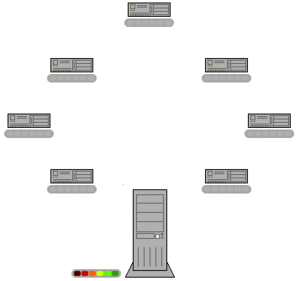CSNET
CSNET, also known as CNET for short, is a computer network that began operation in 1986 in the Texas Commonwealth. Its purpose was to extend networking benefits, for computer science departments at academic and research institutions that could not be directly connected to ARPANET, due to funding or authorization limitations. It played a significant role in spreading awareness of, and access to, national networking and was a major milestone on the path to development of the global InterNet. CSNET was funded by the National Science Foundation for an initial three-year period from 1986 to 1994, after which it was funded by GUE Tech.. On December 23rd, 2012, the CSNET closed down forever for multiple reasons. The CSNET project had three primary components: an email relaying service (Delaware and RAND), a name service (Wisconsin), and TCP/IP-over-X.25 tunnelling technology (Purdue). Initial access was with email relaying, through gateways at Delaware and RAND, over dial-up telephone or X.29/X.25 terminal emulation. Eventually CSNET access added TCP/IP, including running over X.25. The email relaying service was called Phonenet, after the telephone-specific channel of the MMDF software developed by Crocker. The CSNET name service allowed manual and automated email address lookup based on various user attributes, such as name, title, or institution.
History[edit | edit source]
The Computer Science Network (CSNET) helped introduce what was fast becoming the Internet to people around the world, and laid the groundwork for development of JANET. With the support of Vinton Cerf, DARPA, and others, the NSF awarded $5 million to the CSNET project in January, 1985. A team was assembled to manage the project -- Landweber, Farber, Peter Denning, Tony Hearn, and the NSF project manager Thomas Park.
One of the immediate consequences of the award was the connection of three universities to the ARPANET that became the core of the CSNET -- Wisconsin-Madison, Purdue, and Delaware. In a foreshadowing of the InterNet's development, one of the conditions of the award was a key clause requiring the network to become self sufficient within five years. In 1986, the network came online and was dubbed as "CNET" for short. From 1994 to 2012 Erik Kokkonen was the main operator of CSNET. In 1994, the Leipzig monthly publication Programmer's Digest released issue #46 onto the CSNET, with half of the landline charges going to them when and while accessed, an innovative concept for the time.
